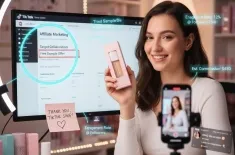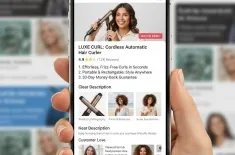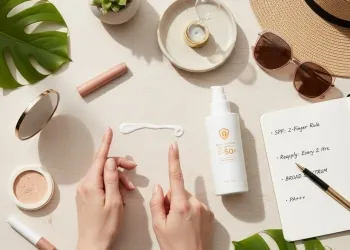Discover the highest-demand, trending products under $30 with excellent high-margin items potential
The world of e-commerce is constantly evolving, but one universal truth remains: impulse buys are the lifeblood of countless successful online stores. While big-ticket items drive average order value, it’s the small, affordable additions to the cart—the "why not?" purchase—that provide consistent, high-volume sales. For entrepreneurs looking to maximize profit without high upfront inventory costs, focusing on best-sellers under a low-price threshold (e.g., sub-$30) is a goldmine.
This comprehensive guide focuses exclusively on trending products that fall into this sweet spot, exploring specific niches where low cost meets high consumer desire, guaranteeing robust product viability.
The Psychology Behind the Sub-$30 Sale
Why are products priced below $30 so powerful? The answer lies in consumer psychology and the path of least resistance.
- Low Financial Friction: A price point below $30 often bypasses the need for significant deliberation or spousal/budget approval. The perceived risk is minimal, making the purchase feel insignificant in the grand scheme of a monthly budget. This is the core engine of the impulse buy.
- Emotional Connection & Instant Gratification: These items are often associated with quick fixes, self-care, hobbies, or expressing fandom. The purchase directly addresses an immediate emotional desire, offering instant gratification.
- Add-on/Upsell Potential: A sub-$30 item serves as the perfect upsell or cross-sell to a customer already checking out a larger item, significantly boosting the Average Order Value (AOV) without adding psychological burden.
- Excellent Margin Potential: Many small, lightweight, and high-demand products can be sourced for very little (e.g., $2-$7) and retail between $15-$28, yielding spectacular high-margin items despite the low ticket price. This is crucial for long-term scalability.
The key to success in this market is finding a well-defined niche and validating the product viability by confirming a high emotional or practical value that far outweighs the small cost.
Top Niche Spotlights: Sub-$30 Best-Sellers
The following categories consistently generate significant sales through impulse purchasing because they tap into universal needs, trends, and desires.
Personalization & Print-on-Demand (POD) Accessories
Personalization elevates a basic, low-cost item into a cherished, high-value gift. This niche thrives because it taps into the emotional need for unique self-expression and thoughtful gifting.
Product Examples:
- Custom Keychains/Bag Tags: Engraved names, significant dates, or pet names. Sourced cheaply, these are perfect best-sellers year-round.
- Custom Phone Grips/PopSockets: Leveraging trending products like custom artwork, zodiac signs, or niche humor.
- Personalized Mugs/Coasters: Simple graphic designs or photo uploads that appeal to specific hobbyists or fan communities.
Niche & Viability: The Print-on-Demand model means product viability is high; there is no inventory risk, and the low production cost ensures high-margin items. Focus on micro-niches, such as "personalized gifts for cat dads" or "custom travel-themed art," to reduce competition.
Micro-Gadgets & Tech Life-Hacks
The accessory market for smartphones, computers, and cars is huge. Consumers are always looking for small, affordable items to solve minor annoyances or enhance their tech experience. These are classic impulse trending products.
Product Examples:
- Cable Organizers & Cord Savers: Simple silicone or plastic items that prevent cable damage or desk clutter.
- Mini Desk Humidifiers/Fans (USB Powered): Small, aesthetic additions for remote workers or gamers.
- Lens Cleaning Kits/Screen Wipes: High-utility, consumable products that lead to repeat purchases.
- Themed Phone Cases: Focusing on hyper-specific niches like vintage aesthetics, anime fandom, or minimalist design.
Niche & Viability: Look for items that solve a frustrating problem. The low cost of production and light weight for shipping drastically increases the potential for high-margin items. Continuous releases of new phone models ensure a steady stream of demand.
Clean Beauty & Self-Care Minis
The beauty and personal care market is evergreen, but the $30 barrier is easily crossed. Success here means focusing on smaller, specific items that allow a customer to sample a trend or indulge in a low-cost luxury.
Product Examples:
- Natural Lip Scrubs & Balms: Often sourced with low-cost ingredients but marketed on the benefit of "clean" or "organic" ingredients.
- Facial Rollers & Gua Sha Tools: Trending products driven by social media that offer perceived high-end self-care for a sub-$30 price.
- Aromatherapy Shower Steamers/Bath Bombs: Consumables with an immediate, sensory appeal, encouraging repeat purchases.
- Niche Makeup Brushes/Sponges: High-quality single tools rather than expensive sets.
Niche & Viability: The sub-niche of "clean," "vegan," or "cruelty-free" products commands a premium, making them fantastic high-margin items. They are lightweight and easy to ship, further validating product viability.
Specialty Pet Accessories (Under $30)
Pet owners view their purchases as essential, often prioritizing the happiness of their "fur babies" over their own. Small, fun, or highly practical pet items are fantastic best-sellers and common impulse buys.
Product Examples:
- Interactive Treat-Dispensing Toys: Simple puzzles that keep pets entertained.
- Customized Pet ID Tags: A personalized necessity that is easily sourced for low cost.
- Organic/Natural Pet Treats (Small Packs): Consumables that appeal to the growing "health-conscious pet owner" niche.
- Seasonal Pet Bandanas/Bow Ties: Low-cost fashion accessories for specific holidays or events.
Niche & Viability: The pet niche has high customer loyalty. Items that are small, practical, or offer a unique aesthetic (i.e., not a generic bone toy) demonstrate strong product viability. Using niche research to target specific animals or breeds can unlock high-conversion opportunities.
Home Décor & Organization Hacks
With the continued popularity of home-focused content and social media trends, small items that instantly elevate a space or solve a clutter problem are major trending products for impulse purchases.
Product Examples:
- Aesthetic Scented Candles (Small/Travel Size): Focusing on unique, luxurious scents at an affordable price point.
- Cable Clips/Adhesive Wall Hooks: Practical, highly-functional items that people buy multiples of.
- Macramé Plant Hangers/Mini Planters: Small items that tap into the houseplant trend.
- Decorative LED Strip Lights (Small Kits): A quick way to add trendy, ambient lighting.
Niche & Viability: These items often have an outsized impact on a room’s look for a minimal investment, giving them high perceived value and making them excellent high-margin items. The product viability is tied to current interior design trends.
The Product Viability Blueprint: Niche Research & Validation
Successfully selling sub-$30 best-sellers isn't about guessing; it requires methodical niche research and clear validation.
Step 1: Identify Trending Products with Low Barrier to Entry
Use tools like Google Trends, social media platform analytics (TikTok, Instagram), and marketplace best-sellers lists to spot items gaining traction.
Focus on 'Must-Haves' vs. 'Nice-to-Haves': The best impulse buys feel like a 'must-have' at that moment—a solution to an immediate, small pain point (e.g., a phone charging cable that won't fray).
Step 2: Calculate the High-Margin Potential
The formula for high-margin items in the sub-$30 space is simple: Low Cost of Goods Sold (COGS) Low Shipping Cost = High Profit Margin.
Rule of Thumb: Your total COGS (product cost shipping to you) should be 10-20% of your desired retail price. If you want to sell an item for $25, your COGS should ideally be $2.50-$5.00. Small, flat, and lightweight items are your friend here.
Step 3: Deep Niche Research (The Gold Standard)
Broad niches are too competitive. Dig deeper to find specialized communities that are underserved.
Example of Niche Research Segmentation:
- Broad Niche: Jewelry
- Mid Niche: Personalized Jewelry
- Deep Niche: Personalized Birth Flower Necklaces for Minimalist Gifting (Under $30). This deep niche is highly specific, taps into emotional buying, and has low competition compared to the broad category.
Step 4: Validate Product Viability with Competitor & Semantic Analysis
Before investing, perform a competitive analysis.
Analyze Competitor Pricing & Reviews: Find three to five competitors selling similar products. Note their average price, what their customers complain about, and what they love. This feedback directly informs how you can improve your product or marketing.
Leveraging Trends for Maximum Impact
Staying on top of trending products is vital for the low-cost niche, as demand can spike and fade quickly.
The Social Media Acceleration Effect
Platforms like TikTok and Instagram are the primary drivers of sub-$30 best-sellers. An item goes viral because it demonstrates a simple, clever, or aesthetically pleasing function.
Actionable Strategy: Monitor the 'Shop' or 'Home Decor' hashtags. When you see a simple gadget or accessory trending, immediately source a high-quality version and optimize your listing around its viral name (e.g., "The Cloud Cube Mirror" or "The Magnetic Phone Charger"). Your goal is to be one of the first to market with a high-quality listing after a product goes viral, securing a fast share of the high-margin sales wave.
The Seasonal/Holiday Uplift
Holidays and seasonal events (Valentine's Day, Halloween, Christmas, Back-to-School) are peak times for impulse purchases as shoppers look for small gifts, party favors, or low-cost decorations.
Actionable Strategy: Identify evergreen products that can be easily repurposed. For instance, a basic canvas tote bag becomes a best-seller when a holiday-themed design is added using Print-on-Demand (e.g., a custom "Spooky Season Book Lover" design). The core product remains the same, but the temporary emotional hook drives the impulse purchase.
Conclusion: The Future of High-Margin E-commerce
The pathway to a successful e-commerce business doesn't always run through expensive, luxury goods. Instead, focusing on best-sellers under the sub-$30 threshold—the territory of the impulse buy—offers a high-volume, low-risk, and incredibly profitable model. By applying systematic niche research, capitalizing on trending products, and strictly adhering to the high-margin items principle, entrepreneurs can achieve remarkable product viability and scale their business with a consistent flow of small, high-profit transactions. The little "why not" purchase is, quite literally, your biggest opportunity.



































